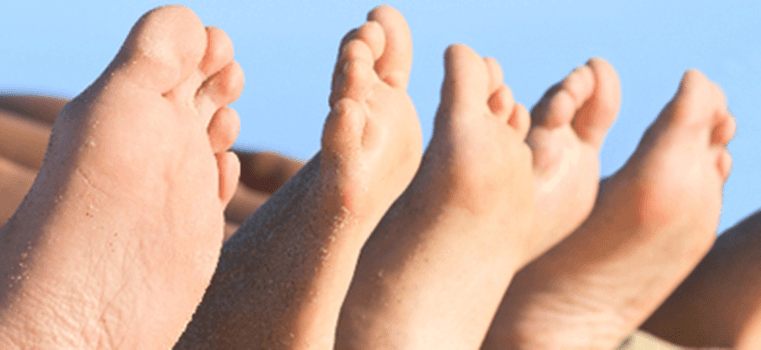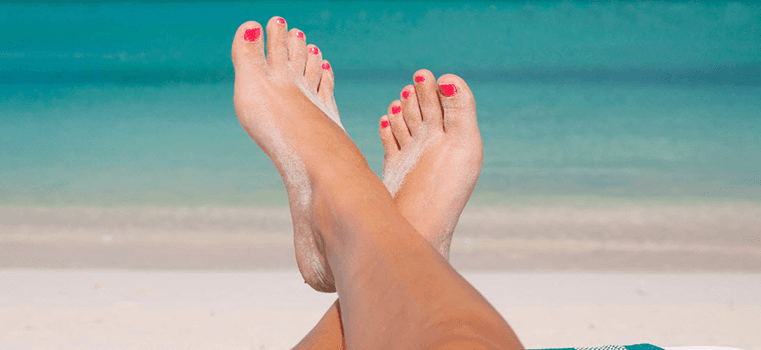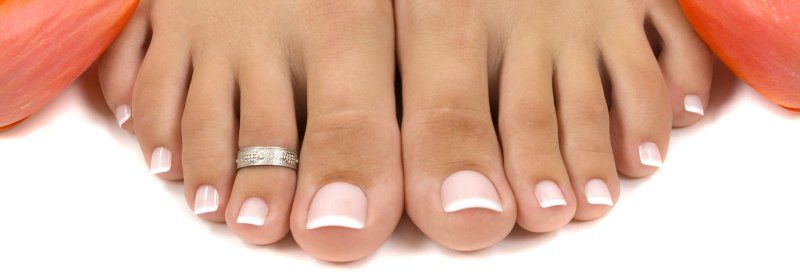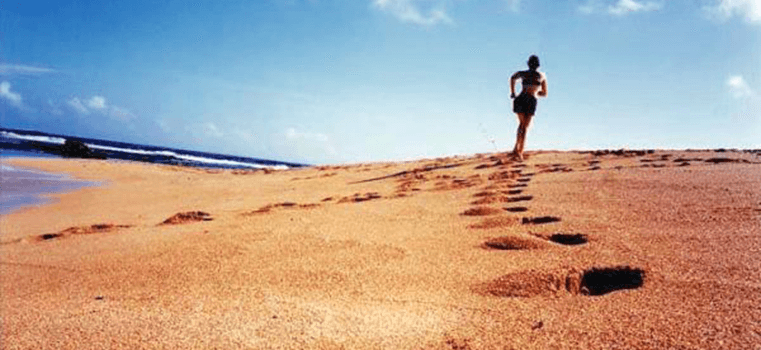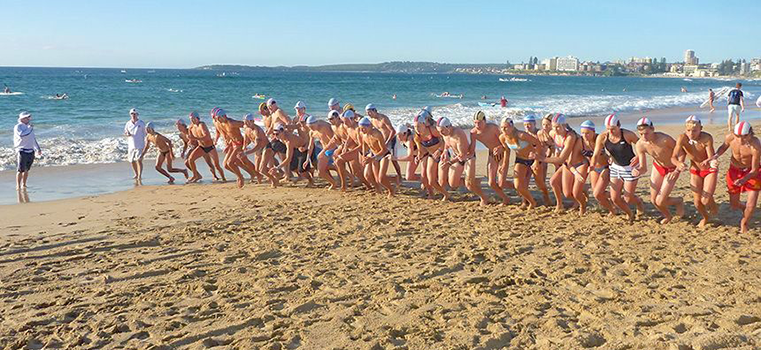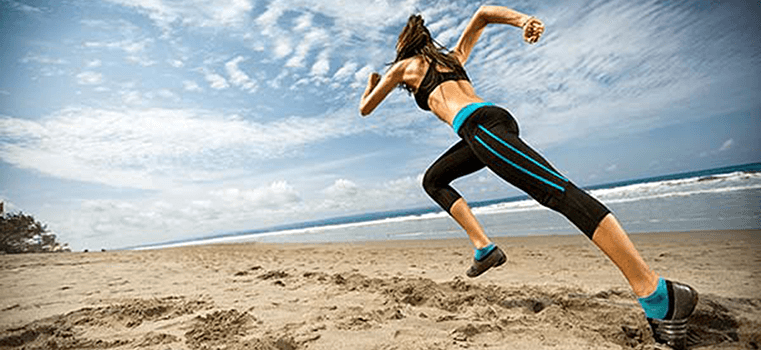Mark Reed, DPM
DABFAS FAPWCA

714-528-3668
Shoe Fitting Guide
Advice on Shoe Fitting
For many people, finding a shoe that fits properly can be a frustrating and time-consuming process. Because many people have subtle abnormalities of their feet, the process of finding a proper fitting shoe can be difficult. There are few simple guidelines that if followed can make the process a bit more tolerable. There are several good shoes on the market some of them may even be styles that you may like. With the availability of Internet shopping, the process of finding shoes for the hard-to-fit individual may be made a bit easier.
When purchasing shoes, it is always a good idea to have the salesperson measure your feet. It is also a good idea to have both feet measured, because in many instances there may be a difference in the size of your feet. If you have two feet that are not the same size, it is recommended that you buy shoes to fit the bigger foot. Our feet change just like our eyes do as we get older. A person's feet tend to become a bit longer and wider. Women, during pregnancy have a tendency for their shoe size to change. This is because during pregnancy a woman's body produces a hormone called elastin. This hormone softens the ligaments about the pelvis to assist during delivery. Unfortunately, the hormone also affects other ligaments in the body. The ligaments in the foot are particularly affected. This coupled with an increase in weight and a change in the center of gravity causes many women to experience a change in their shoe size. Our feet also have a tendency to change size during the course of the day. Shoes that may feel comfortable in the morning may feel tight and uncomfortable later in the day. This occurs because of a variable amount of swelling in the feet that occurs as the day goes on. Therefore, it is a good idea to buy your shoes later in the day.
The shape of the shoe is important, but surprisingly little attention is paid to this feature of the shoes we buy. The "Last" of the shoe determines the overall shape of the shoe. The shoe "last" may be straight or curved. To determine the "last" of the shoe, turn the shoe upside down and look at the sole. Imagine a line that goes through the center of the heel of the shoe and then out the center of the toe area of the shoe. You might be surprised what you find. In "curve lasted shoes" this imaginary line is in the shape of a curve, usually curving inward. Many shoemakers make curve lasted shoes. This is particularly true in sports shoes. A "straight lasted shoe" will have this imaginary line almost straight from the heel to the toes. Now, look at the shape of your foot. Have you ever wondered why your shoes seemed to wear out in the upper part about the toe box in such a funny way? The reason may very well be that you have a rather straight foot, and you are wearing a curve shaped shoe. Curve lasted shoes can aggravate a number of foot problems. These shoes can cause an excessive amount of pressure on the outside of the foot. This has the potential of irritating existing problems like bones spurs in the fifth toe, soft corns between the fourth and fifth toe, and tailors' bunions. Another area of the foot that can become irritated is along the outside of the foot called the "styloid process". The styloid process is the base of the long bone (metatarsal) behind the fifth toe. In some people the styloid process is more prominent and subject to irritation by shoe pressure. There is also a powerful tendon that attaches into the foot in this area from a muscle on the outside of the lower leg. This tendon and some other small tendons on the top of the foot can be irritated by the curve lasted shoe.
Shoe manufactures make curved lasted shoes because they believe that by curving the foot inward it causes greater stability to the foot. In theory they are correct, but shoes rarely are made of materials that are strong enough to influence foot function. Instead, as a person wears the shoe, the shoe over time becomes mis-sharpen and can cause irritation to areas on the outside of the foot. The shoe manufactures have been a bit more successful at producing "motion control" shoe wear in sports shoes, but even there the shoe will rarely be able to hold up to the deforming forces of the foot over time. If a person has an abnormality of their foot that requires some degree of "motion control" they are better advised to seek the advice of a foot specialist who can determine their needs and prescribe a device that corrects abnormal function of the foot. These devices called orthotics fit into normal shoes and last for several years. In many cases the use of an orthotic will correct abnormal wear patterns seen in a person's shoes.
When selecting a good sports shoe there are a few simple guidelines to follow. First of all, fit the shoe to the shape of your foot. In other words, if you have a fairly straight looking foot choose a shoe that has a straighter last to it. Secondly, consider sport shoes that are relatively rigid in the heel portion of the shoe. Heel stability is important in almost all cases. Additionally, look for a shoe that is fairly flexible in the forefoot area. If the shoes do not easily flex in the forefoot, then as the heel comes off the ground during walking and running the big toe is unable to flex properly. Adequate movement of the big toe joint is important for normal foot function. There are two more things to check before you purchase the shoe. Place the shoe on a firm flat surface and observe what the back of the heel of the shoe looks like. The heel of the shoe should be relatively perpendicular to the surface the shoe is sitting on. If the back of the shoe is angled in one direction or another this could indicate a defect in the manufacture of the shoe. Lastly, put you hand inside the shoe and check for any defects in the seams of the shoe. Seams that are prominent have the potential to cause irritation to areas on the foot.
Diabetic patients need to be particularly aware of the type of shoes that they wear. This is especially true if they have poor circulation, numbness or a loss of sensations in their feet (neuropathy). Shoes should be purchased that have adequate room in the toe box area. The upper of the shoe should be of soft leather with few or no seams. Extra depth shoes are available that meet the needs of many diabetic patients. In many instances Medicare will reimburse for one pair of shoes per year if the patients doctor recommends extra depth or special shoes. There must be adequate documentation in the doctor's medical record for the need for the shoes. Many foot doctors offer diabetic shoes as part of their practice.
Anatomy of the Running Shoe
As all runners know, running begins with a good foundation. And where do we find that foundation? At the ground level where the rubber meets the road.
In other words, your shoes, the pieces of leather and rubber that separate your feet from the hard concrete of the road.
Let's look at the anatomy of a running shoe, and the four sections of the shoe that make it complete.
The uppers of the shoe may be made of leather or, for the lighter shoes, a synthetic which is lighter, washable and breathable (to reduce heat from the foot). Another component of the upper is the tongue of the shoe, which should be padded in order to cushion the top of the foot against lace pressure. At the back of the shoe, the ankle collar should also be padded to prevent rubbing and irritation of the Achilles tendon.
The outer sole of the shoe is the treaded layer which is glued to the bottom of the midsole. It resists wear, provides traction, and absorbs shock. This is probably the most important layer for the "street fighter" or road runner. The outer sole usually consists of blown rubber, hard carbon rubber, or a combination. The blown rubber is the lightest but is not durable as pure carbon. The stud or waffle outer soles are excellent for running on soft surfaces such as grass or dirt as they improve traction and stability. On the flip side, the ripple sole is better designed for running on asphalt or concrete surfaces.
The heel counter is the inflexible material surrounding the heel. It must be made of a material that is both rigid and durable to support and stabilize the heel. Just look at any old shoes, and you will see the wear and breakdown of the inner heel counter, which, over a period of time, tends to lose its stiffness. That's why an external counter is typically placed between the midsole and the base of the heel counter. You will also see a wedge that adds height to the heel and enhances the shoe's ability to absorb shock and reduce strain. The advantage to the added heel height is that it will shorten the Achilles and Gastrocnemius-soleus muscle, reducing the strain upon those important posterior running structures. The downside is that the higher heel height may feel less stable, causing reduced flexibility in the tendon structure.
The midsole is located between the outer sole and the upper. Many regard it as the most important part of the running shoe. It provides cushioning and shock absorption while concomitantly controlling excessive foot motion (pronation/supination).
The primary materials used in midsoles are ethylene vinyl acetate (EVA) and polyurethane (PU). EVA is a foam that is light and has good to excellent cushioning. The problem is that this material breaks down quickly. In fact, it can break down just sitting in a box in your closet. Compression-molded EVA is one answer, making it harder and more durable. PU is also a foam, usually denser, heavier, and more durable than EVA. PU will stand up longer, but you will give up some of that precious cushioning in return.
Most shoes today are cushioned with gel, foam, or other manufacturer-specific materials that are designed within the midsole. This type of cushioning will extend the life of the midsole while simultaneously adding increased stability and shock absorption. This typically is where you will see the greatest quality difference between the various companies’ shoes and their models. And this is where the technology wars are being waged.
Remember, shock absorption is related to how compressible the midsole material can be made. The more the material compresses, the more movement within the shoe is seen. The less the compression of the material, the better the shoe's motion control, but there is a tradeoff in shock absorption. In this case, the shoe may feel harder, and not as soft as the first case scenario.
Know Your Foot Type
So how important is it to know what type of foot I have, and how I run?
Very important! You need to know the basics of running gait and foot types.
First, when you run, the heel strikes the ground first, usually on the outside (supination). Next, the foot rolls inward and flattens out along the longitudinal arch-pronation. The foot then resupinates by rolling through the ball and rotating outwards. At this point, the foot becomes a rigid lever as it again prepares to push off the ground.
To find a runner who supinates or pronates just the right amount is rare. Typically, most runners, particularly those who become injured with knee pain, Achilles tendonitis, shin splints, I.T. Band, or heel pain, suffer from either excessive pronation or supination.
So, let's look at those terms again, and how they relate on a runner's gait. Everyone thinks pronation is an evil thing. Wrong! Your foot needs to pronate in order to adapt to uneven surfaces. We all have to pronate to a certain degree. However, excessive pronators whose feet roll inwards too much while running are the runners who develop over-use injuries. The overpronator generally has a flattened type of foot (low arches). You can check this yourself by wetting your feet and walking on a piece of paper. If you see the whole footprint, including the arch, you can bet you're an overpronator. If you check an old pair of shoes, you'll see a wear pattern to the inside of your shoes, particularly around the big toe.
Overpronators generally have flexible feet, which creates a very unstable foot. This can lead to many of the overuse injuries previously mentioned. If you are an overpronator, look for a shoe with a lot of motion control, preferably with a board last. A straight-lasted shoe is also recommended for overpronators.
What about if you supinate? The supinator's feet typically roll outward, both in the heel and in the forefoot. You're the ones with the high arches. If you want to see if this is your foot type, go ahead and wet your feet and walk on a piece of paper. If you only see a wet spot of your heel and the ball of the foot, you know you over supinate. When you look at an old pair of shoes, you'll see that they wear excessively on the outside border of the heel, and on the outside of the forefoot near your little toe. You're not in the majority here in this case. Supinators are definitely in the minority compared to pronators.
The high-arched, supinator type feet are more rigid, and cannot absorb shock as well as an overpronator's feet. Therefore, it stands to reason that with a rigid type of foot the supinator will be subject to more lateral ankle sprains, stress fractures, and pain on the outside of the shin and knee. Supinator type feet should look for a shoe that has better than normal cushioning for added shock absorption, as well as flexibility. Many supinator type feet feel more comfortable with a semi-curved or curved last, due to the shape of their foot.
Shopping Tips
So, what are some tips for selecting a good running shoe? Both the American Running and Fitness Association and the American Academy of Podiatric Sports Medicine make the following recommendations:
Try on both shoes, because your feet may not be the same size and the shoes may not be made symmetrically. Walk and jog around the store for a few minutes; climb stairs or try jogging on a treadmill if available.
Try on a couple of different models and sizes so you can make a good comparison. Don't rush your selection.
The lacing area and tongue should be padded, especially if you have a bony bump (metatarsal-cuneiform) on your instep.
Be sure the sole flexes easily where your foot flexes. Buy shoes with removable insoles so you can modify or replace them with orthotics in needed.
Allow a half-inch in front of your longest toe when you stand up. Fit shoes in the afternoon or after a workout, when your feet are larger. Feet swell as much as a full size during a good workout.
The key to finding the best shoe is comfort, not price or brand name. Don't rely on a break-in period; Shoes should feel good the day you buy them.
The toe box should allow your toes room to move around. The mid-part of the shoe when laced should hold your foot snugly so that it doesn't slide forward and jam your toes with each step. If the shoe feels tight across your instep, start the laces on the second pair of eyelets.
The heel counter should fit snugly so your heel won't slip and rub.
Check the quality control of the shoes. Put them on a flat surface near eye level. The mid-line of the heel counter should be perpendicular to the surface.
Try on shoes with the socks, inserts, or orthotic devices you plan on wearing.
It is always suggested that when looking for a good running shoe, first select a good specialty running shoe store with competent salespeople. They are the ones who know the latest in shoe design and performance. Typically, these "fitters" are runners like yourself. They’ve been hired because of their love of running and their interest in their fellow runners. So, search them out, and develop a relationship with a store and a person who has been fitting shoes for a period of time. If you have had a history of injury due to a shoe or a biomechanical problem, seek out a podiatrist in your area. He or she will be able to detect what your problem may be, and the right shoe or shoes to look for.
To extend the life of the shoe, wear them only for running, and let them dry out slowly when wet.


